#19th century clothing
Text

19th Century Japanese Fireman's Coat
Extremely cool design on this one!
#clothes#textiles#textile art#jacket#coat#fashion#19th century clothing#1800s clothing#1800s#love to see these sorts of functional garments that also have such beauty and care put into them
126 notes
·
View notes
Photo
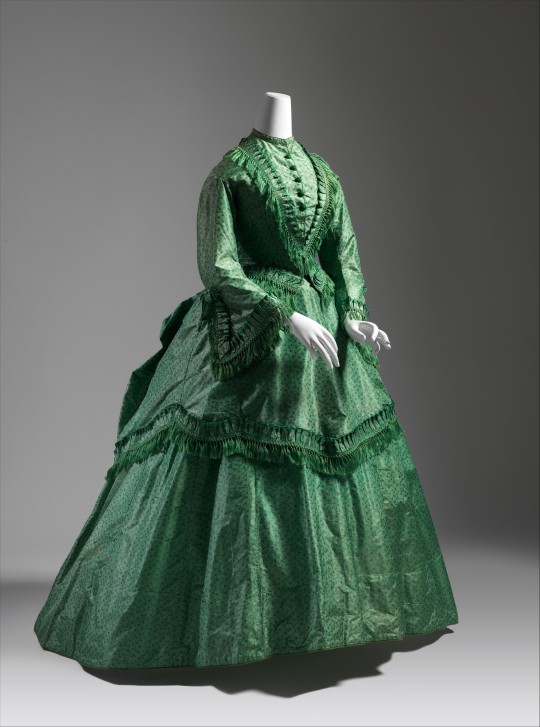
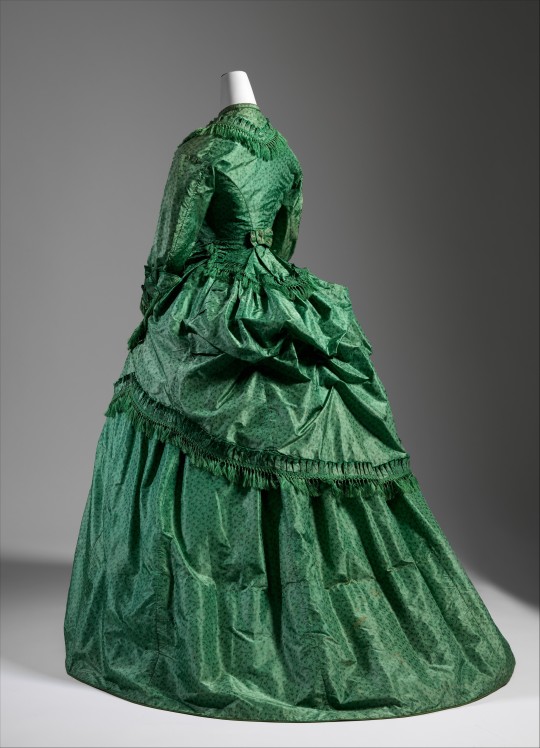
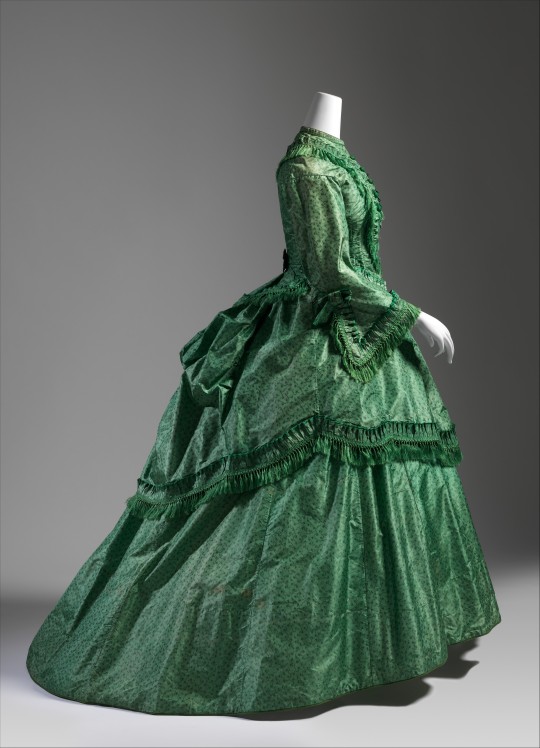
Woman’s Dress
Date: ca. 1870
Culture: British
Medium: Silk
#yes we know this is the infamous 'arsenic dress'#historical fashion#fashion#19th century#history#19th century clothing#19th century dress#19th century fashion#history of fashion#fashion history
328 notes
·
View notes
Text


Early Nineteenth-Century Clothing, The Victoria & Albert Museum, London x x
#item links included#CO Posts#CO Photography#regency clothing#regency costume#romantic era clothing#historical clothing#regency fashion#historical fashion#romantic aesthetic#regency aesthetic#19th century clothing#victoria and albert museum#v&a#the v&a museum#history#1820s#london#19th century
21 notes
·
View notes
Photo
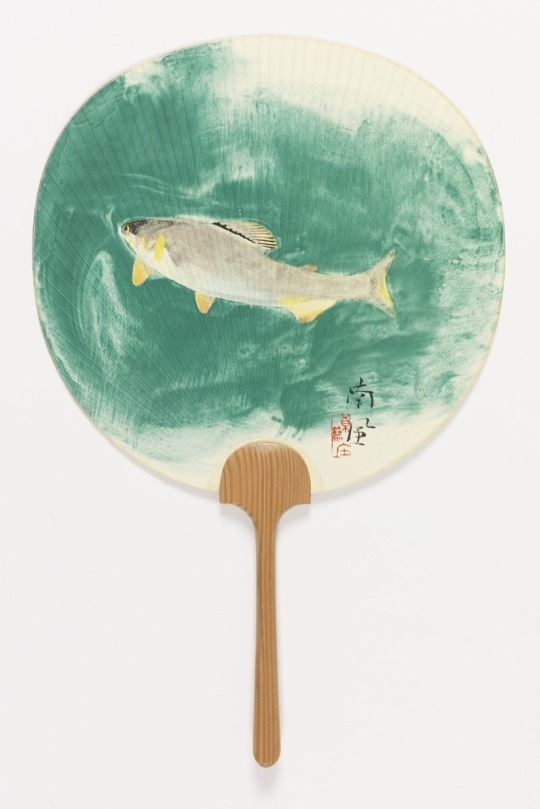
Handscreen, c. late 19th century
China
12 notes
·
View notes
Text




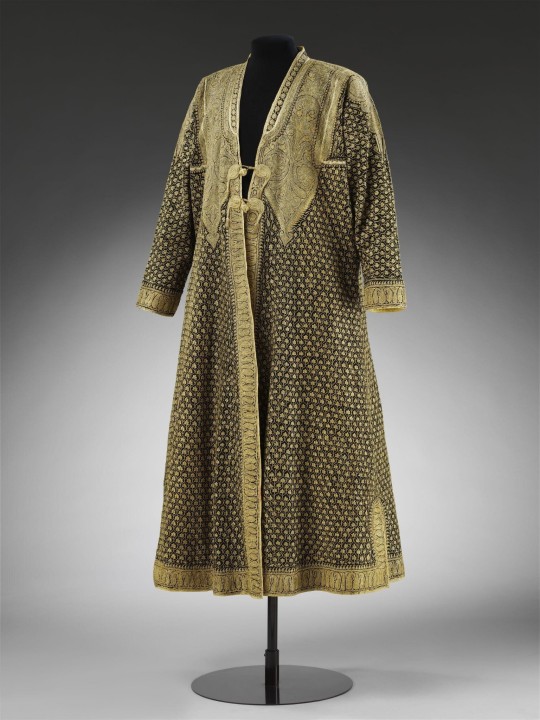
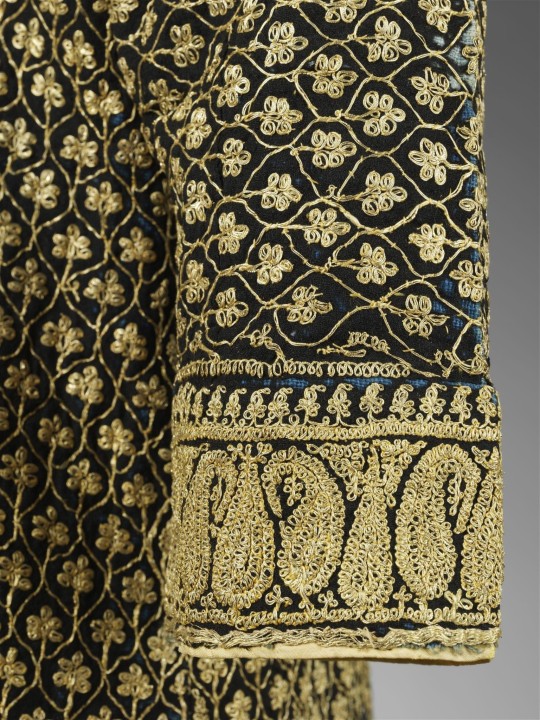
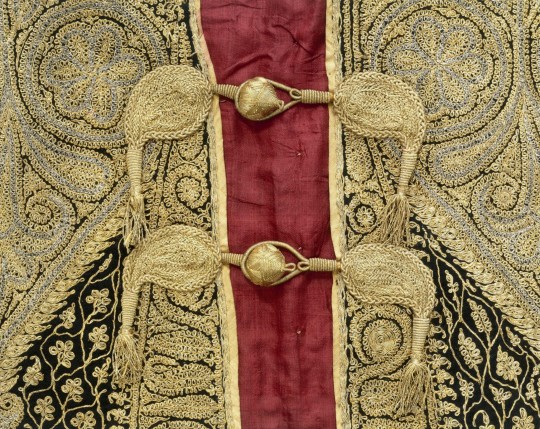

Robe
c.1855
Amritsar
V&A
#historical fashion#19th century fashion#19th century clothing#historical clothing#indian clothing#indian fashion#embroidery#robes#south asian fashion#south asian clothing#fashion#clothing
5 notes
·
View notes
Text
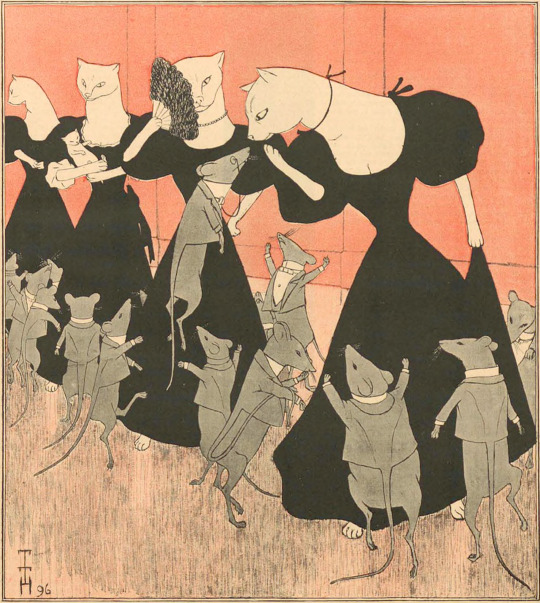
Cats and their rodent admirers. Simplicissimus. July 18, 1896. Cover art.
Internet Archive
#humor#cat#cats#mouse#mice#clothed animals#anthropormrphic#dance#dating#rodents#nemfrog#magazine illustration#1896#19th century#5k
8K notes
·
View notes
Text
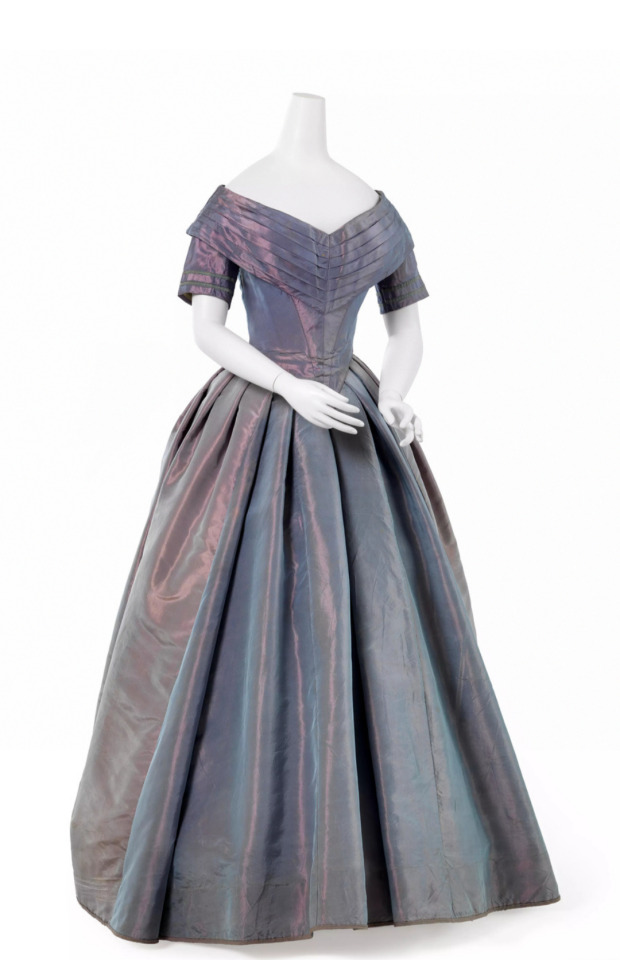

Ball gown, 1840-41
Maker: Unknown
From the collection of Wien Museum
#That's the most beautiful fabric I've ever seen#dress#clothing#historical dress#historical fashion#1840s#19th century fashion#ballgown#garments#costuming#historical costuming#victorian era#victorian fashion#19th century#my post#fashion#period fashion#historical clothing#fashion history#old fashion#iridescent#iridesence#fairy aesthetic#fairycore#light academia aesthetic#light academia
15K notes
·
View notes
Text
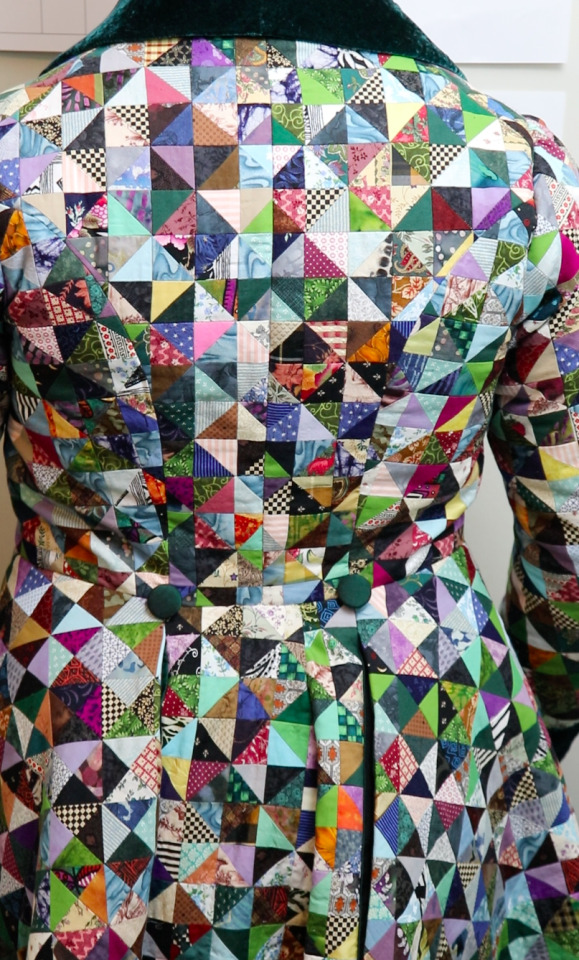
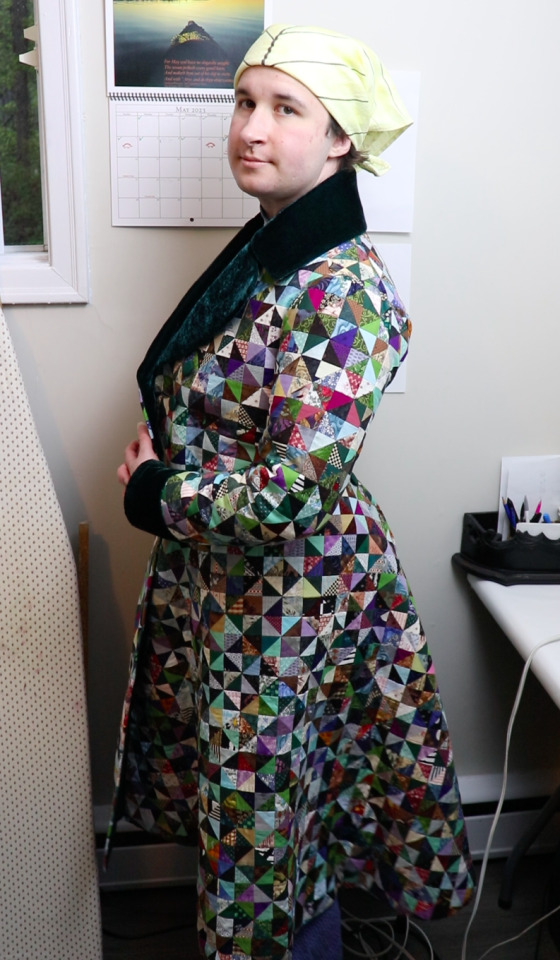
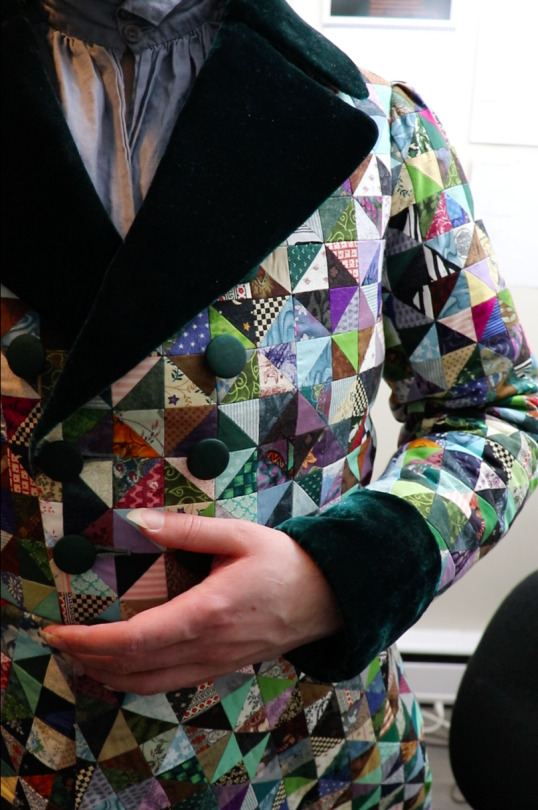
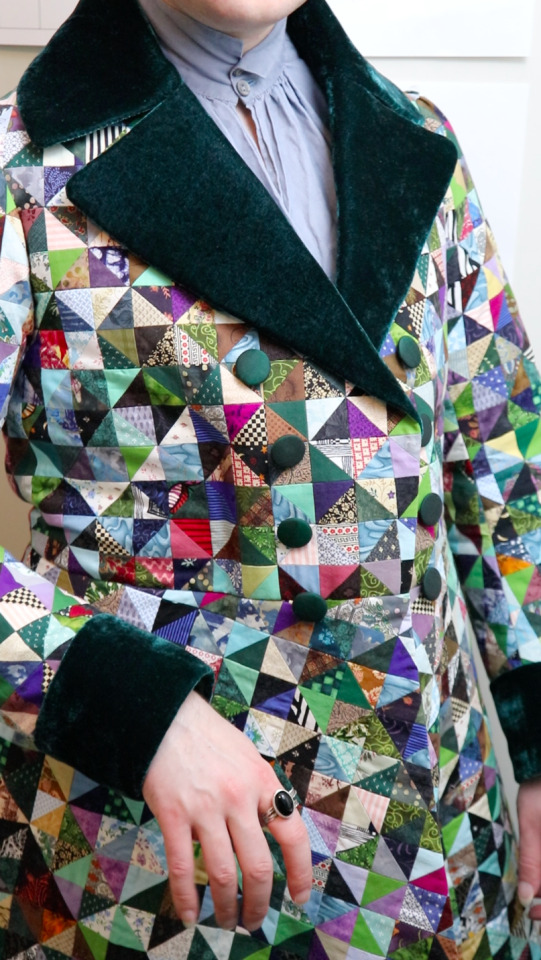
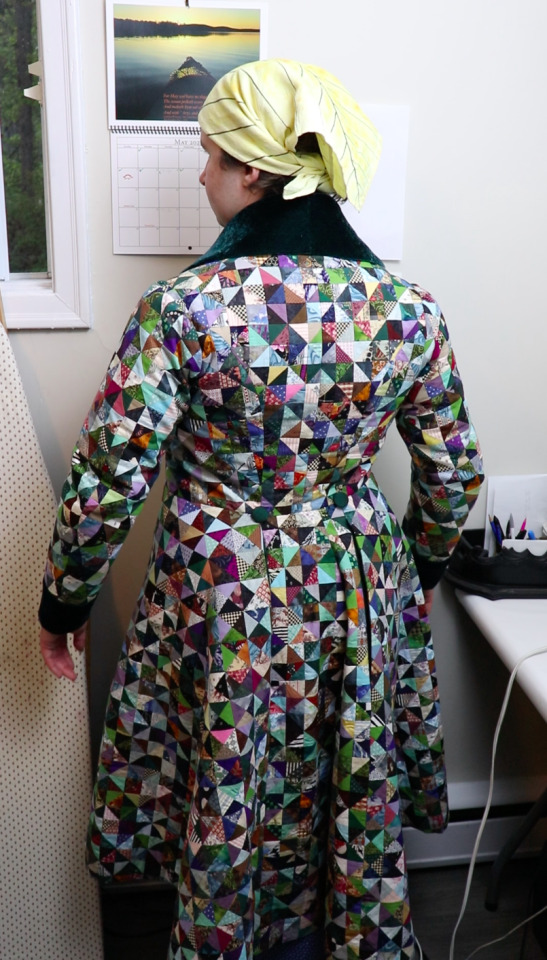

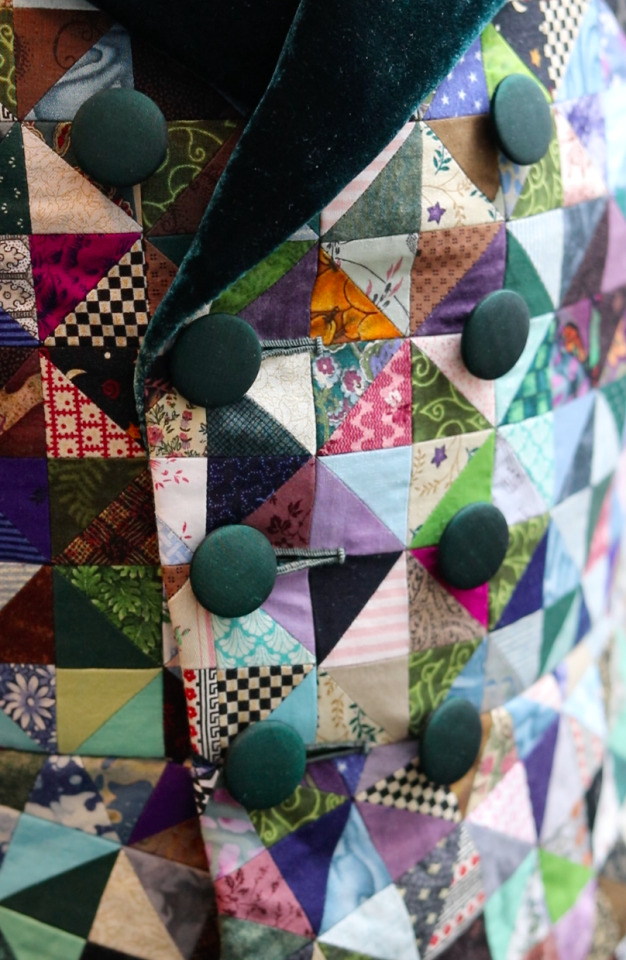

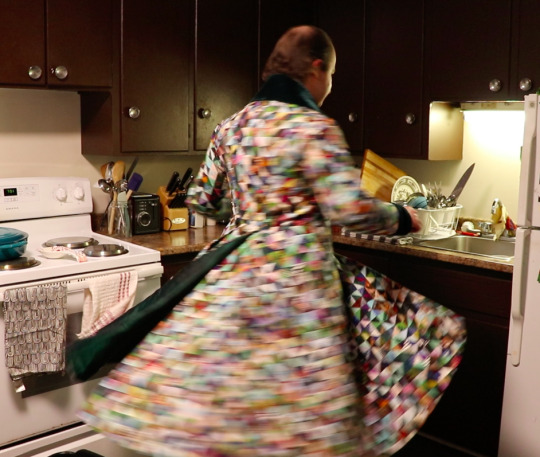
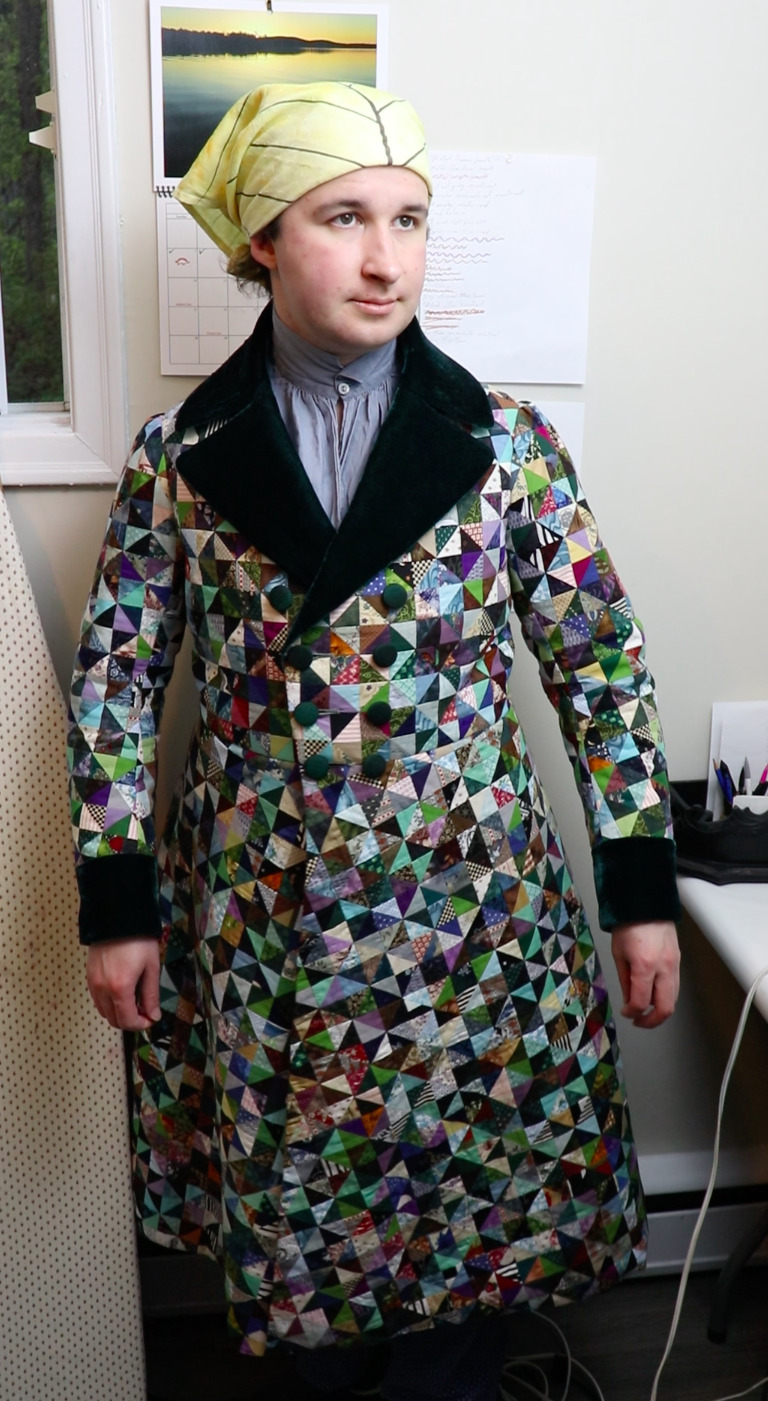

Here are some (not very good) photos of me wearing it! I'll have to get some better ones at my parents house later, because there is absolutely no good space to take photos in my apartment.
I don't have any other 1830's things to go with it, and don't currently have plans to make any. I just wanted this dressing gown specifically.
Anyways! There are 6,957 triangles, all sewn together by machine, but most of the actual garment construction is by hand. The unevenness from all the patchwork seam allowances made it very fussy, and the tailoring took at least twice as long as it would have in a normal fabric. The velvet was also a challenge, being the soft drapey wobbly kind, but I managed.
I accidentally made my triangles a bit smaller than the ones on the original (C. 1835, Powerhouse Museum collection.) which means there are more triangles than there had to be, but that's ok. I really enjoyed doing the patchwork, it's the most wonderfully soothing brainless task ever and I will definitely make more patchwork things.
I'm very happy with how it turned out! It's comfortable and fits pretty well, and is warm but not excessively so.
I kept timesheets for everything, and I haven't added them up yet, but once I do I'll know exactly how long all of this took.
I also filmed it, but the youtube video won't be out for quite a while, because I still have to write and record some more stuff and then edit a very very very very large amount of clips.
9K notes
·
View notes
Text
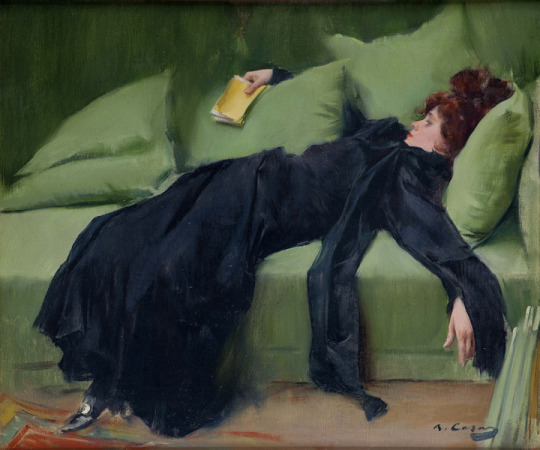
Ramon Casas (1866-1932)
"A Decadent Girl" (1899)
Located in the Museum of Montserrat, Barcelona, Spain
#paintings#art#artwork#genre painting#female portrait#ramon casas#fine art#museum of montserrat#museum#art gallery#catalan artist#genre scene#portrait of a girl#portrait of a woman#side profile#black dress#dresses#clothing#clothes#green#decadent movement#1890s#late 1800s#late 19th century#a queue work of art#1k#2k
2K notes
·
View notes
Text


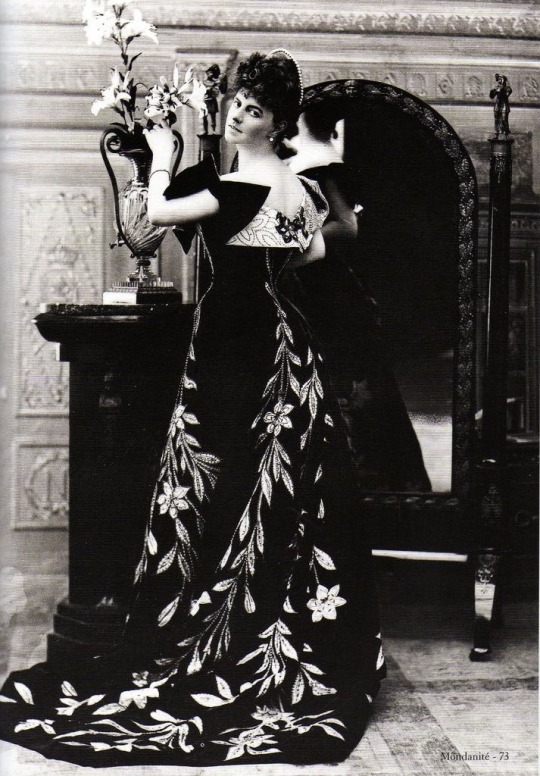

Elisabeth de Caraman-Chimay, Comtesse Greffulhe (1860–1952) made this dress famous by posing in it for the photographer Nadar in 1896. The museum also possesses the photographs made at the time, in which the elegant countess opted for being photographed in back view so as to highlight the slimness of her waist: this close-fitting 'princess line' dress – there were no seams at waist level – and the sinuous lines of the lily plants accentuate the impression of tallness and slenderness.
One of the leading figures on the Paris social scene – not only for her rank and sovereign elegance, but also for her culture and intelligence – Comtesse Greffulhe was a significant source of inspiration for Marcel Proust, who used her as the model for the Duchesse de Guermantes in Remembrance of Things Past. She was also the cousin of Robert de Montesquiou, who drew on her for some of his poems, including a sonnet whose closing line Beau lis qui regardez avec vos pistils noirs ('Beautiful lilies gazing with your black pistils') doubtless refers to this dress. The bertha collar, whose original form was altered, certainly during its owner's lifetime, could be turned up to form bat's wings; a bat being Montesquiou's emblematic animal, making this a true dress-poem.
#fashion#historical#historical fashion#victorian#victorian era#victorian fashion#historical clothing#historical dress#history#long dress#black dress#victorian history#victorian dress#fashion dress#1800s dress#19th century#19th century fashion#the gilded age#dresses#dress
2K notes
·
View notes
Text

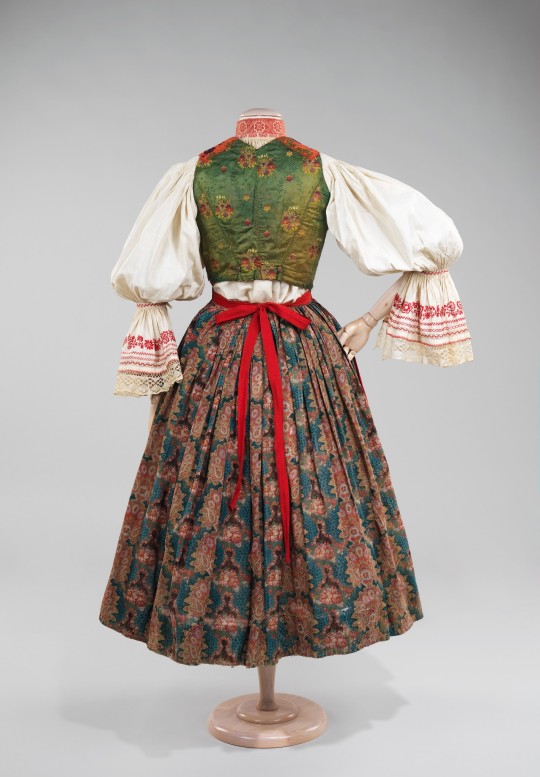
• Ensemble.
Date: 1840–1880
Culture: Slovak
Medium: wool, cotton, silk
#fashion history#history of fashion#dress#fashion#19th century fashion#19th century#19th century dress#ethnic#ethnic fashion#traditional dress#traditional#traditional clothing#ensemble#Slovak#1840#1880
3K notes
·
View notes
Text

A Honiton lace wedding veil, circa 1900
#honiton#lace#honiton lace#wedding veil#veil#1900#19th century#florals#antique#clothing#antique clothing#fashion#historical fashion#1900s
949 notes
·
View notes
Text

Extremely rare woman's tie in muslin embroidered with blue flowers and branches. Shaped with Ariadne's thread covered with sky blue silk. Identical choker closed by a hook.
1832-1833
3K notes
·
View notes
Text

🔸Serbian girl dressed in serbian traditional clothes from Central Serbia 🇷🇸
🔸Time : 1870s
#serbian#balkan#europe#serbian beauty#serbian traditional clothes#serbian folklor#slavic#serbian women#serbian tradition#Serbian culture#Culture#Tradition#Folklor#19th century#19th century Serbia#serbian aesthetic#central serbia#Centralna Srbija#Srbija#Srpkinja#Narodna nošnja
301 notes
·
View notes
Text

Pair of Ankle Boots
ca. 1860s
Great Britain
V&A
#historical fashion#historical clothing#19th century fashion#19th century clothing#british historical fashion#british clothing#boots#ankle boots#leather#elastic#british fashion#19th century#european clothing#european fashion#fashion#clothing
3 notes
·
View notes
Text
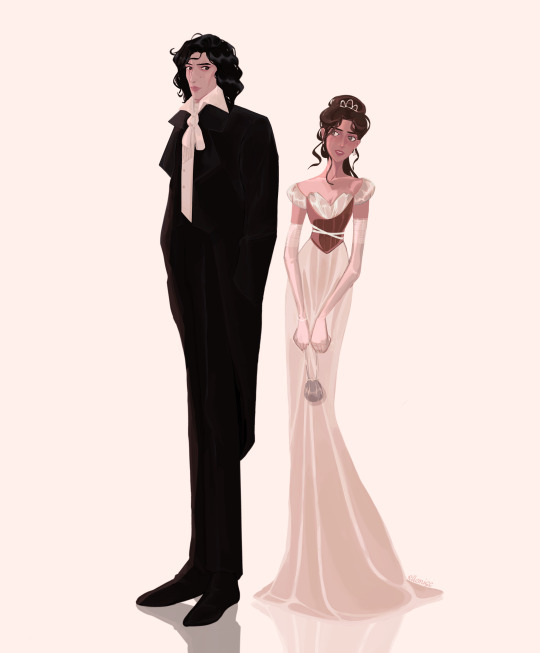
space prince and his other half but make it 19th century au
#reylo#reylo fanart#rey#ben solo#kylo ren#kylo x rey#star wars#19th century#character art#character design#illustration#artists on tumblr#ik the 19th century is like 100 years of different clothing trends so that's kinda stupid to not specify a decade#but I cant pinpoint what decade its closest to bc it was loosely inspired by the *vibes* of 19th century fashions from all century#okay? okay cool
981 notes
·
View notes